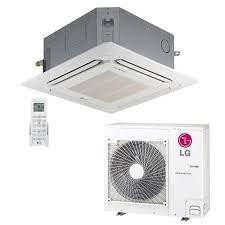With summer just around the corner, now is a good time to think about replacing your central air conditioning system, or installing a whole new one. More than 75 percent of U.S. homes use air conditioning, and 90 percent of new homes are equipped with central air. And eco-conscious consumers will be gratified to know that today’s air conditioners are more energy-efficient, which means they cost less to run while keeping you cool and comfortable. Of course, installing or replacing central AC costs a little more than other AC types, so you'll want to get it right.
It’s not practical for Consumer Reports to test central air conditioning systems because there are so many variables, including a home’s size and design, how the system is installed, and construction of the ductwork.
Instead, we ask our members about the systems they own. In our most recent central air conditioning survey, we talked to our members about the almost 24,000 new central AC systems they bought and installed between 2005 and 2020. We learned how satisfied they were overall with their purchase, the cost of repairs, how many systems break, and which parts break most often.
Of the central AC systems covered in our survey, we predict that 36 percent will break or experience problems by the end of the eighth year of ownership. Find out the details from our reliability survey, and learn about the types of central air conditioning systems available and how to choose and maintain them. Plus, learn how to find a good contractor to do the work.
Central Air Conditioning Types
The most common type of central air conditioning is the split system, which features a large, boxy condenser outside the home and a fan-and-coil system inside, connected by pipes carrying refrigerant. The air is distributed through ductwork. However, not every home can accommodate the ductwork needed to install central air. Split ductless systems are an option for those homes because, as the name indicates, they don’t require ductwork.
A true central air-conditioning system uses ducts to distribute cooled air throughout the house. In a “split system,” the most common design, refrigerant circulates between an indoor coil and a matching—meaning from the same brand—outdoor condenser with compressor (see illustration, below). The refrigerant cools the air, dehumidifying it in the process; a blower circulates air through ducts throughout the house. A thermostat maintains the temperature at the setting you select. A variation is the “heat pump,” a type of system that functions as a heater and air conditioner.
Here’s how to keep yours humming.
Keep it clean. Clean grills and filters monthly. Clear debris and dirt from condenser coils and check for blockages in the drainpipe. When changing the filter, follow the filter manufacturer’s recommendation on how often to swap it out. In general, the thicker the disposable filter, the less often it needs to be changed. (The filters we test last between three and 12 months.)
Seal and insulate ducts. Air can escape through leaks or when ducts aren’t sealed and insulated properly, wasting 20 to 30 percent of the energy used to run your system. Sealing your ducts will keep you cooler in the summer and warmer in the winter. That’s why it’s called duct tape, not duck tape.
Central AC costs a little more than just a normal AC, therefore you should buy it carefully. This can help you before your best buy.

